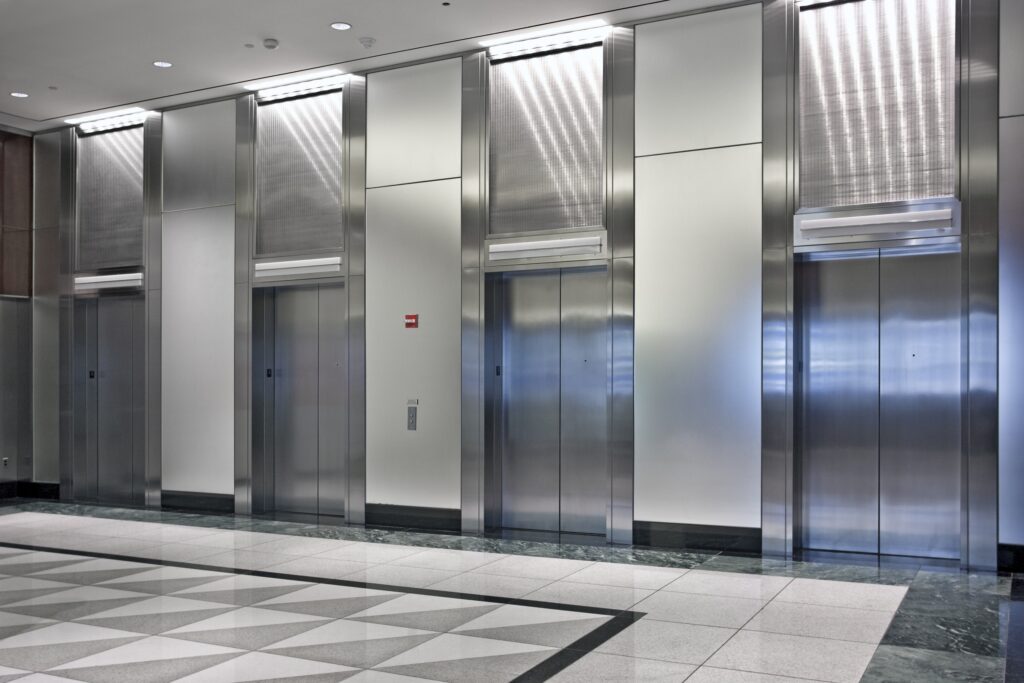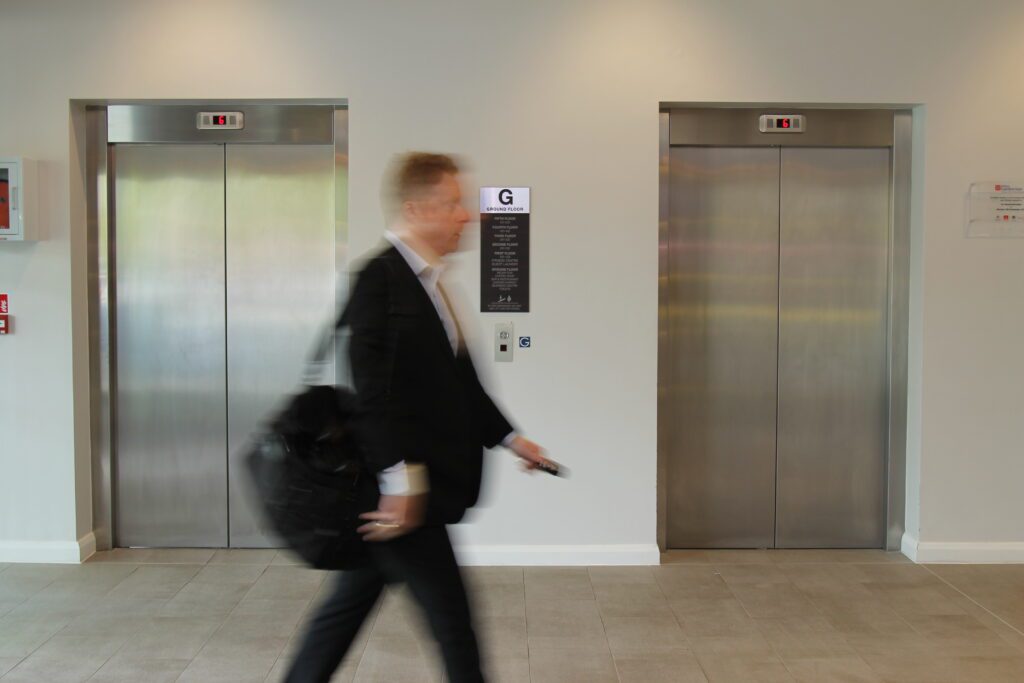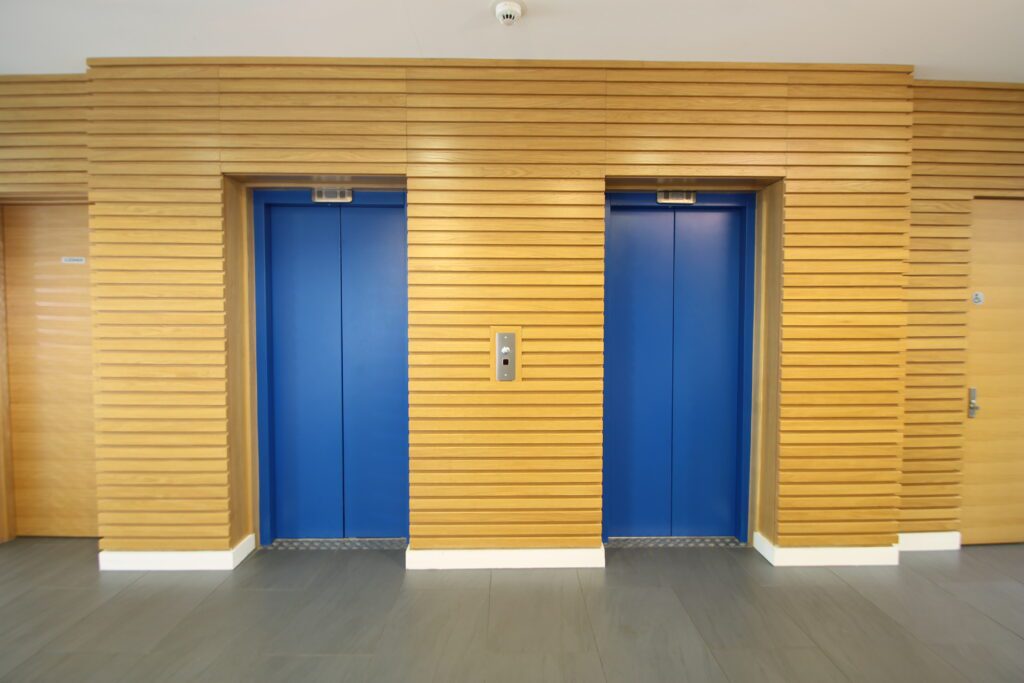Lifts and elevators come in different categories, types, builds and designs to suit the building and the purpose for which they are installed.
Passenger lifts are the most common, but other types of lifts also include cargo lifts and dual-purpose lifts that are designed for both passenger and heavy cargo.
At Sheridan Lifts, we have decades of experience in choosing the right types of lifts for different buildings, and have all of the proper training to be able to install, maintain, and repair lifts of all kinds! To learn more, get in touch with our expert team or read on to know which type is best suited for your building.

Types of Lifts for Different Buildings
Passenger Lifts
This is the most common type of lift and can be found in almost any type of building that has more than six floors. Passenger lifts come in different sizes that correspond to specific passenger loads.
Passenger lifts are found in a wide range of different buildings, from high-rise residential buildings to commercial buildings, hospitals, shops, schools, offices, and many many more. Passenger lifts and personnel lifts come in many different weight capacities, and there is plenty of scope for maximum height restrictions, which means they’re suitable for even the tallest of buildings!
Passenger lifts can also be used as a type of disabled access lift, increasing accessibility and improving safety in a building. Accessible models of transport, such as passenger lifts, can improve the value of all types of buildings, as well as bring your premises in line with accessibility regulations.
As passenger lifts are used primarily by people, the safety features incorporated in them are significant. As passenger elevators are often used to increase accessibility in many premises, they can often include features such as handrails, lighting, braille buttons, emergency alarms, and visual and audio indicators of which floor the lift is at and whether they are going up or down.
Cargo Lifts
Cargo lifts, goods lifts, service elevators, and freight elevators are used to transport heavy loads away and are often dedicated to this function to cut down on foot traffic. Cargo lifts are common in commercial establishments such as stores, restaurants and offices and are installed on a different shaft away from common work areas. Service lifts come with basic interiors but are designed to carry heavier loads compared to typical lifts.
The type of cargo lift in different buildings can vary depending on the function of the lift, the height of the lift, whether there is space for an elevator shaft, the lift equipment required and much more.
Goods lifts and cargo lifts can come in a few different forms:
- Dumbwaiter lifts
- Platform lifts
- Dedicated shaft lifts (similar to a passenger lift, but larger and with a focus on lifting heavy equipment, rather than user experience)
- Trolley lifts
Double-purpose Lifts
Double-purpose lifts or goods passenger lifts are designed for both passenger and cargo. Common in residential buildings, hospitals and office buildings, this lift type is often wider than a passenger lift and has a larger capacity to suit different types of loads. Like passenger lifts in certain types of buildings, they are also often designed to accommodate handicapped passengers which means they come with features like non-slip floors, handicap-friendly support bars and easy-to-reach emergency systems.
Residential Lifts
Also called domestic lifts, these kinds of lifts are designed to move passengers among different floors in a residential setting and are built either inside or outside the home. Residential elevators are smaller than regular elevators and are often built to accommodate up to three people at a time.
A special type of residential lift is the stairway lift or stairlift which is common in homes where someone in the family has a problem with independent mobility. This type of lift is one of the most accessible models of lifts and is installed along an existing staircase, following the shape of the stairs. It can also be constructed for outdoor or indoor applications in the home and can be remotely controlled.
Custom Lifts
Also called bespoke lifts, these are designed according to a specific purpose or need. Bespoke lifts are often favoured by private users who want elevators that are designed according to specific needs, such as private handicapped users who live in multi-story buildings.
Bespoke lifts are also called such because the interior design can also be custom-made, making them a popular choice for high-rise buildings or atrium lifts.

Lifts According to Height
Lifts may also be categorised according to building height.
- Hydraulic lifts are commonly found in low-rise buildings or those that have a maximum of three stories. Hydraulic lifts are named such because they use an underground hydraulic cylinder.
- Mid-rise buildings or those that have up to eleven stories typically use geared elevators.
- High-rise and tall buildings are suited for gearless traction lifts for maximum safety and efficiency when travelling over taller lift height distances.
These are the most common types of lifts that suit the needs of a building and the people using it. To ensure that the lift is safe and can provide the service needed by a building and its passengers, work with a reputable lift contractor who can cater to your specific design and function requirements.

Choosing the right type of lift for different buildings with Sheridan Lifts
At Sheridan Lifts, we have decades of experience in installing a wide variety of lift types in buildings all over the UK.
Whether you have concerns about the maximum weight and lifting capacity of your lift, the maximum elevation, the most versatile type of lift, size restrictions in your building, the safety measures of your lifts, the safety protocols of a lift construction project, or anything else, we can help you make an informed decision on the right type of lift for your building!